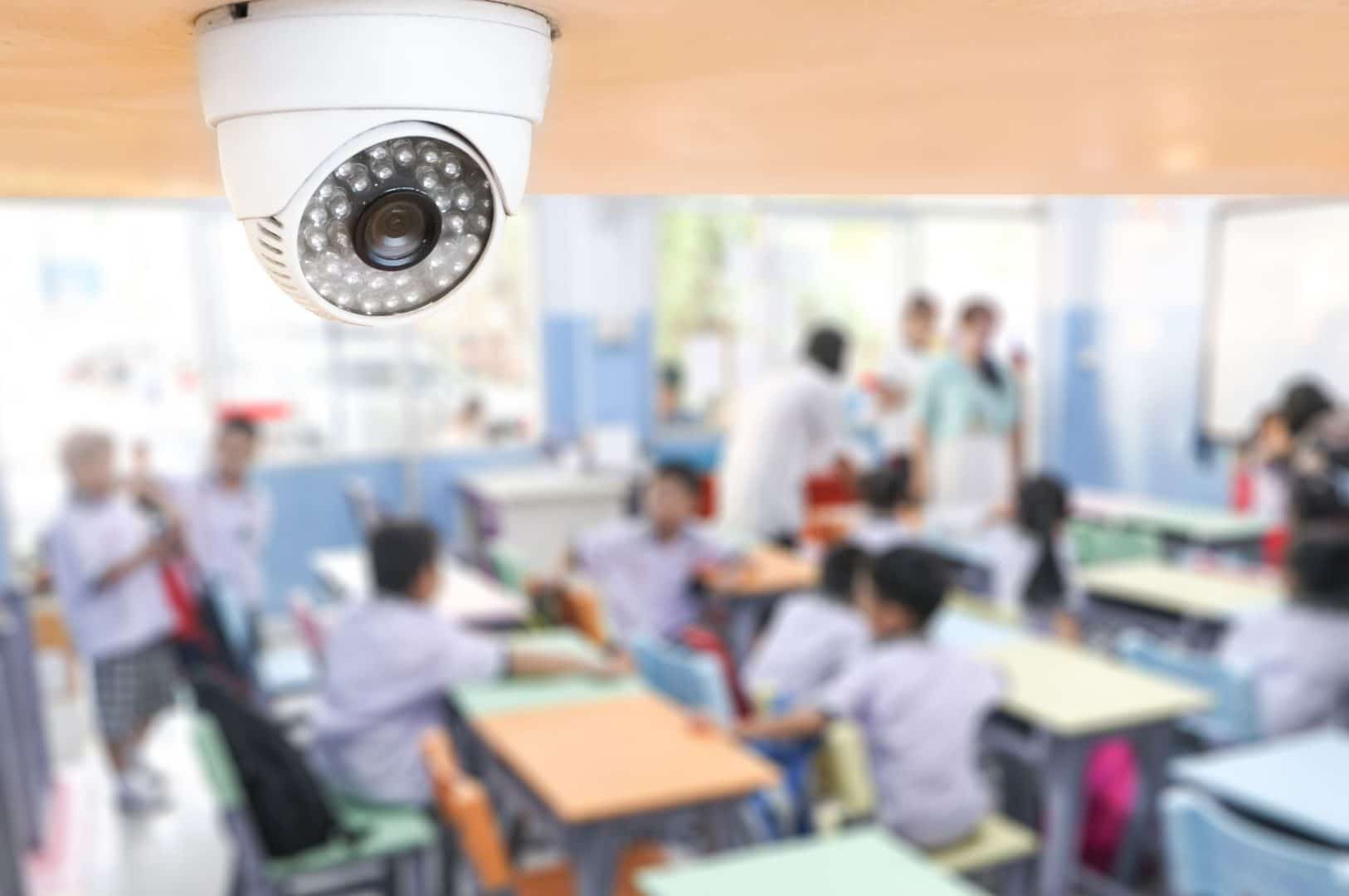By Paul Messenger
Not long ago, security concerns for most schools involved student conflicts, vandalism, theft and liability — now, the foremost concern is life safety.
School shootings have become a major motivator for improving the security of school districts in the United States. Increasing outbreaks of active shooter and other security incidents in recent years have prompted parents, administrators and law enforcement to take a hard look at improving campus safety. According to EveryTown Research, since 2013, there have been more than 560 school shootings in the U.S.
One of the best ways to mitigate this risk is to deploy policies, procedures and technologies that keep unwanted visitors from gaining access to a campus.
Video security, access control and a wide range of integrated open platform security technologies are combining to create an effective first line of defense for education facilities and save valuable time during an emergency event.
Seeing the Layers
Security professionals agree that physical security can be thought about as layers, with the perimeter being the first line of defense. Schools must detect and prevent unwanted intruders from entering their secure space.
For example, a trend that is happening more in schools is the creation of entry vestibules — a single, controlled access point that prevents visitors from moving past that point without authorization.
This approach creates a control point where a visitor comes into the vestibule, is visually verified via cameras, or speaks with someone at the front desk who greets and identifies the visitor, and then is either allowed or denied access into the controlled area.
Connecticut Tragedy Ushered Change
Following the 2012 Sandy Hook Elementary School shooting in Newtown, Connecticut, security integration firm Advanced Security Technologies (AST) worked with several of its manufacturer and technology partners to donate products and labor to install a new video security system for the school district.
The AST team and its partners were able to outfit the entire district with protection layers: at least 30 cameras at each school, doors with electronic access control, intercoms and intrusion detection systems.
Tom Marino, AST’s director of operations and integrated systems architect, has worked with many school districts around the region to design and install security systems. He is an advocate of the comprehensive layered approach to security.
“We can’t anticipate all possible events, but an effective strategy ultimately boils down to time. If we can save time in an emergency, we can save lives,” said Marino. “Even just five seconds could make all the difference between life and death.”
Of the many physical security options available, network video surveillance offers the unique ability to provide real-time visual verification of situational awareness and recorded video data for incident evaluation. Additionally, this data can be monitored on-site, on mobile devices or remotely.
Open platform video also enables integrated operations with a wide range of other security and information systems, including access control and video analytics such as motion detection, directional monitoring and virtual periphery tripwires to alert for faster response time.
Three Components of School Security
Marino stresses that there are essentially three components to an effective security program:
- The organization’s safety and security policies and procedures
- Trained personnel to enforce the policies and procedures
- Technology tools to help the personnel execute the policies and procedures
“You can mitigate the damage in an emergency event by slowing down the assailant and providing a quicker response,” said Marino. “Combining the use of policies, people and technology can make a very real difference in the outcome of these events.”
New York District Deploys Mobile Video for First Responders
After the Sandy Hook tragedy, a school district in New York began planning an upgrade for its existing access control and wanted to deploy a new video security system at the same time.
From the beginning, the safety committee insisted that the district work with local emergency responders, including the police and fire departments, and local homeland security officials. The committee wanted to work with anyone involved with incident response, to ensure the ability to give needed access to see what is going on, live or recorded.
Provided with a map-based interface to the district’s video management software, officers can quickly navigate campus buildings and click on logically named camera locations. This capability could save valuable response time in the event of an emergency.
Streaming real-time video from the cameras has been made available at the police department, fire department and in police mobile units. In the event of an emergency, any dispatch center, car or fire authorities that have computer access can see what is happening to evaluate optimal actions.
Texas Border District Upgrades to IP Video
The Mission Consolidated Independent School District (CISD) in Texas took a strong focus on ensuring the safety of students, teachers and parents after the breaking news about Sandy Hook.
Mission CISD serves almost 16,000 students in four high schools, four junior high schools, 14 elementary schools and two special needs schools. The district also includes administrative offices and several other departments.
After years of evaluating IP camera management software systems, the district created a command center staffed by two certified technicians. The technicians each have seven monitors and oversee maintaining the cameras and ensuring the servers are fully operational. Some of the camera features include motion detection, day/night functionality, vandal-resistant housings and remote focus/zoom.
Mission CISD uses more than 600 IP network cameras and 260 legacy analog cameras with encoders to convert analog video to digital. Each campus has a dedicated server with multiple servers in select locations. Their security solution provides perimeter protection around each campus, and cameras are deployed at various points of entry in school gymnasiums, cafeterias, libraries, hallways and playgrounds.
Deploy, Plan and Prepare
Having a successful security strategy in place means making sure that all physical aspects of a security system — cameras, remote and mobile monitoring applications, access control systems, networks, intercoms, emergency exits, perimeter sensors, lighting and all other safety aids — are installed properly and fully functional.
Within the layers of a security plan, the total solution is only as strong as the weakest point.
Paul Messenger is manager of Partner Development & Inside Channel Management Team (ICM) for Milestone Systems, www.milestonesys.com. He leads the ICM team in educating and demonstrating the power of the open platform to Milestone partners and customers.







